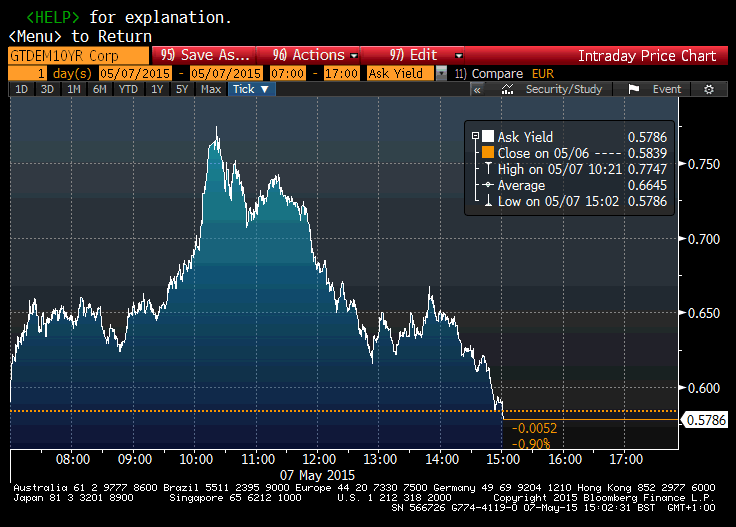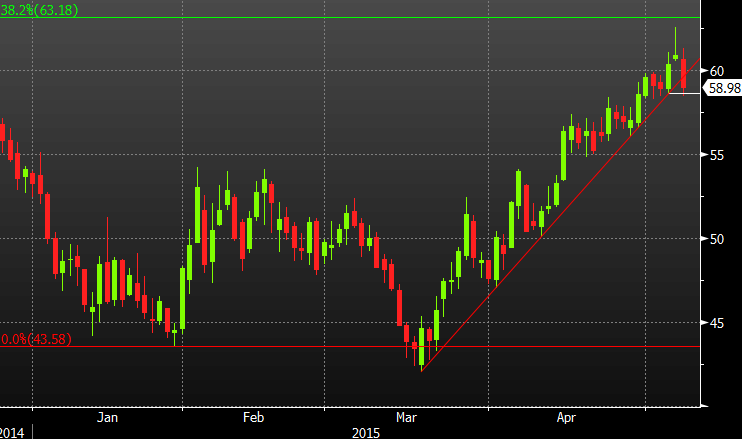Summary – A top-down review of interesting calls and comments made last week in Treasuries, monetary policy, economics, stocks, bonds & commodities. TACs is our acronym for Tweets, Articles, & Clips –our basic inputs for this article.
Editor’s Note: In this series of articles, we include important or interesting Tweets, Articles, Video Clips with our comments. This is an article that expresses our personal opinions about comments made on Television, Tweeter, and in Print. It is NOT intended to provide any investment advice of any type whatsoever. No one should base any investing decisions or conclusions based on anything written in or inferred from this article. Macro Viewpoints & its affiliates expressly disclaim all liability in respect to actions taken based on any or all of the information in this article. Investing is a serious matter and all investment decisions should only be taken after a detailed discussion with your investment advisor and should be subject to your objectives, suitability requirements and risk tolerance.
1. WOW.
For the third week in a row, we begin with Wow because we are genuinely wowed, this week even more than the past two weeks. It is one thing to get big moves in new tech stocks but it is totally another thing to get such big moves in large macro asset classes like bonds. What happened around pre-dawn on Thursday morning was mindblowing. The 10-year German Bund yield shot up to 78 bps and the 10-year Treasury yield followed to 2.31% and then they reversed by 23 bps into Friday’s close.
- Thursday – michael mackenzie @michaellachlan – Round trip for 10yr Bund yield, as mkt shows signs of stability. Looks like 78bps was good enough for buyers

This is simply how large illiquid positions get unwound, even in liquid sovereign bond markets.Or as John Burbank of Passport Capital said on BTV “risk parity guys are blowing up“.
This was the biggest story of the week. But was it just par for the long course? Tony Crescenzi of Pimco pointed out that there have been 20 instances of JGB yields shooting up by 50 bps in that long bull market. The epicenter of this move is in German Bunds and it does pose a challenge to Draghi.This is one issue where the Bundesbank & Draghi are on the same side. So they may have stepped in on Thursday to by some bunds. Ira Harris of Credit Swiss said on Thursday that the move in Bund yields may be abating soon and that is a positive for Treasuries. Technicals might suggest the same.
- Thursday-tradingpoints @tradingpoints s 30 Yr Yield: Many trends terminate or at least pause at 1.272 price extensions

If all this is true, we should see a rally in Treasuries next week. Komal Sri Kumar was brave to stand up in this week’s decline and say that the 10-year at 2.20% was a steal. Larry McDonald & ACG Analytics suggested buying another tranche of TLT on Thursday. We think they are both right but to what extent? Rick Santelli said that the days of 1.64% yield were gone and he suggested a new range of 2%-2.25%. Jeff Gundlach also said that the lows of July 2012 were the bottom.
But the bigger story, the inexorable trend of 2015 is the steepening of the yield curve.Look how the curve reacted to the payroll report – the 2-5 year curve fell sharply while the 30-year yield barely budged. The 30-5 yr spread closed again at its 2015 high of 141 bps. This could well be because the expectations of the Fed raising rates in 2015 has been steadily eroding. And these expectations took a dive after the “eh” payroll number, to quote Paul Richards of UBS. He said he is now in the December 2015 rate hike camp. Richards seems to be joining Larry Summers in the camp of something wrong in the economy. We highlight this because he was solidly in the risk camp in 2014.
But David Rosenberg called the payroll report “picture perfect” and the stock market agreed with a big broad rally on Friday. But that could just as well have been a relief rally about the relief from the bond selloff:
- Thursday – Joe Kunkle @OptionsHawk – Market dislikes when asset groups get volatile, sell-off, just as the Oil sell-off held back stocks for a bit, Bond collapse doing the same
So we wonder what we wondered last week – does the S&P now breakout to a new decisive high or fail again? The conditions could be ripe for either as a trader on CNBC FM said on Friday afternoon:
- “people are extremely complacent, traders are extremely complacent, positions are under-weight. I don’t think they know it is up or down. Right now, there is no protection on; going to be interesting to see what happens”
David Tepper saw it differently according to CNBC – either stocks go up big or bonds go down big. So if bonds stop going down, do stocks go up big? Or the only reason for stocks to go down hard is a big sell off in the bond market? Meaning he is short bonds as a hedge against his long stocks? When Europe was boring, the June-July period used to deliver a big reversal in the Treasury market – either reverse the big decline from April-June or reverse an April-June rally. The 30-year yield is sitting very close to the 200-day of 2.88% as of Friday’s close. The direction of that break used to tell the direction into June.
The precipitous fall in Oil lent credence to the deflation story. And the selloff in bonds seems to have coincided with the steep rally in Oil. Did oil make a short term high this week? One such opinion came from the article Pain coming in the oil patch from ForexLive.com:
- “A three-candle reversal appears to be underway. A close below $58.63 today would confirm it but either way I like the downside. If you draw the downtrend from the start of October (I would prefer it from the June highs), then we’re also closing in on the 38.2% retracement. Finally, the modest uptrend since March broke today.”

And what about the Dollar? Speaking of coincidence or correlation, the steep rise in bond yields, the steep rise in Oil began/accelerated after the March Fed meeting in which the Fed talked down the Dollar. And what did that get them? A 40-bps hike in 10-year yield and a rise in mortgage rates. Is that what Chair Yellen wanted?
Is it the Fed? Is it the macro? Or is it simply that positions in macro classes are now much bigger than what the Fed or ECB can handle? Is that what Gross et al are saying when they complain about liquidity?
Send your feedback to editor@macroviewpoints.com Or @MacroViewpoints on Twitter